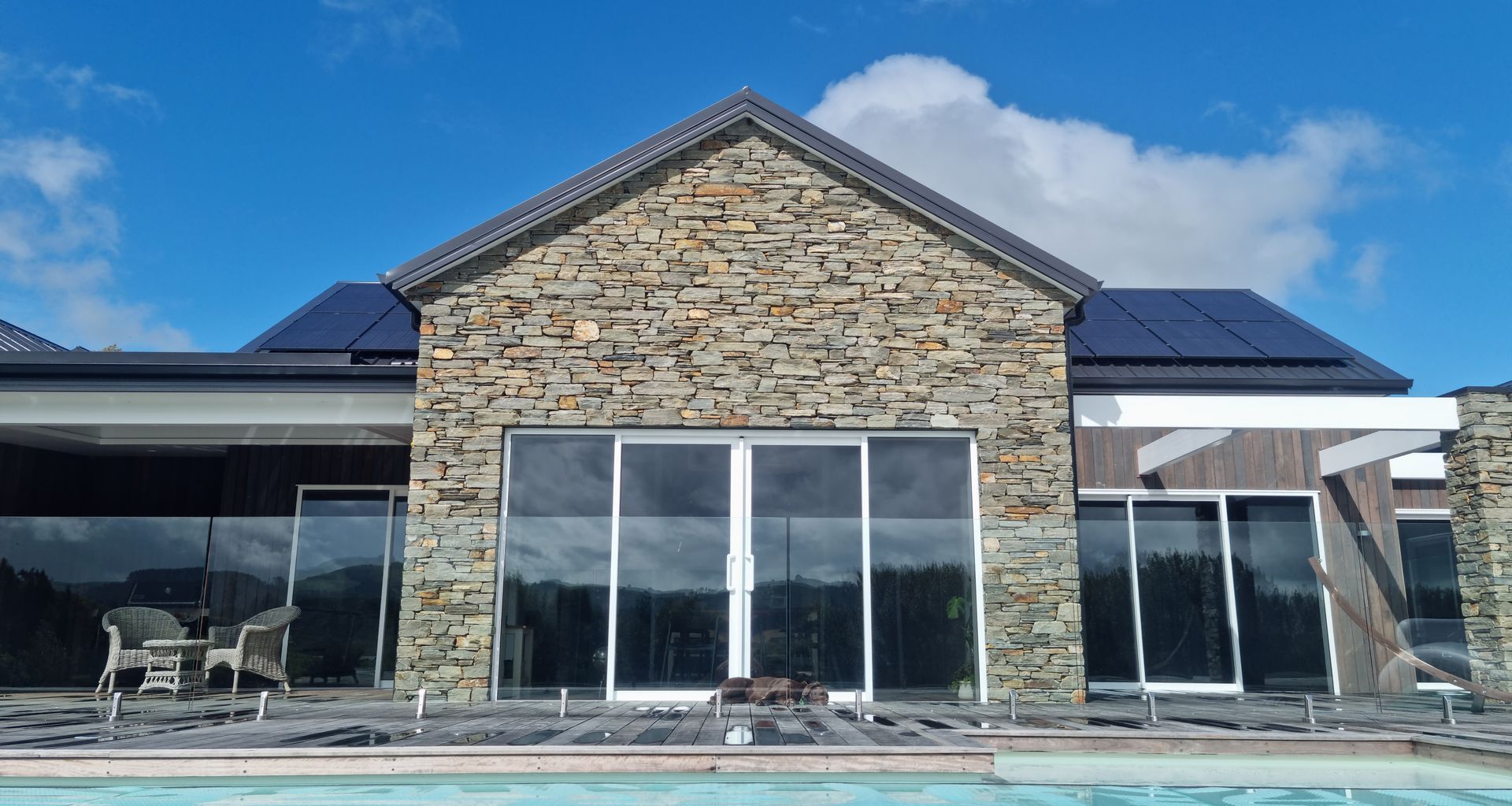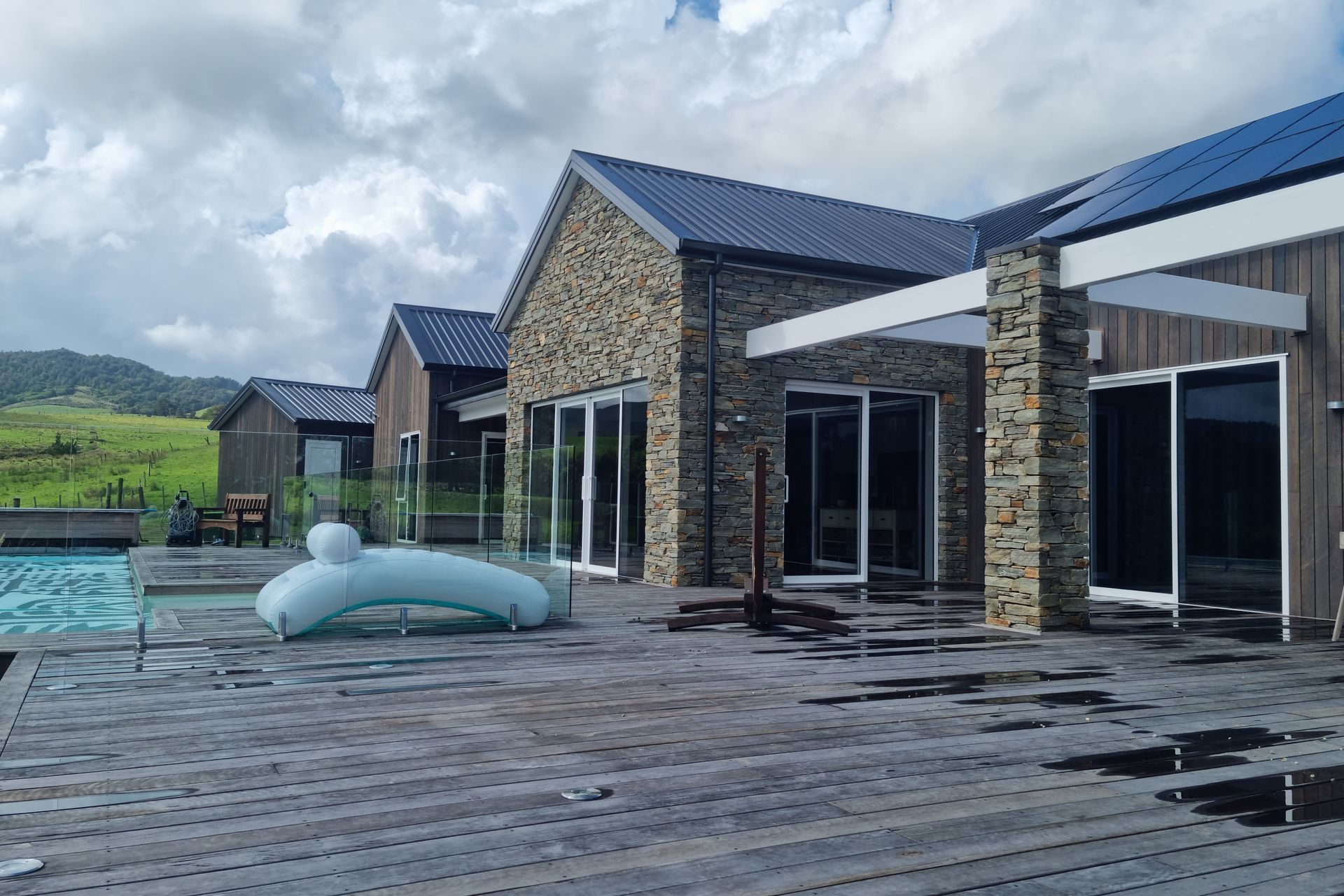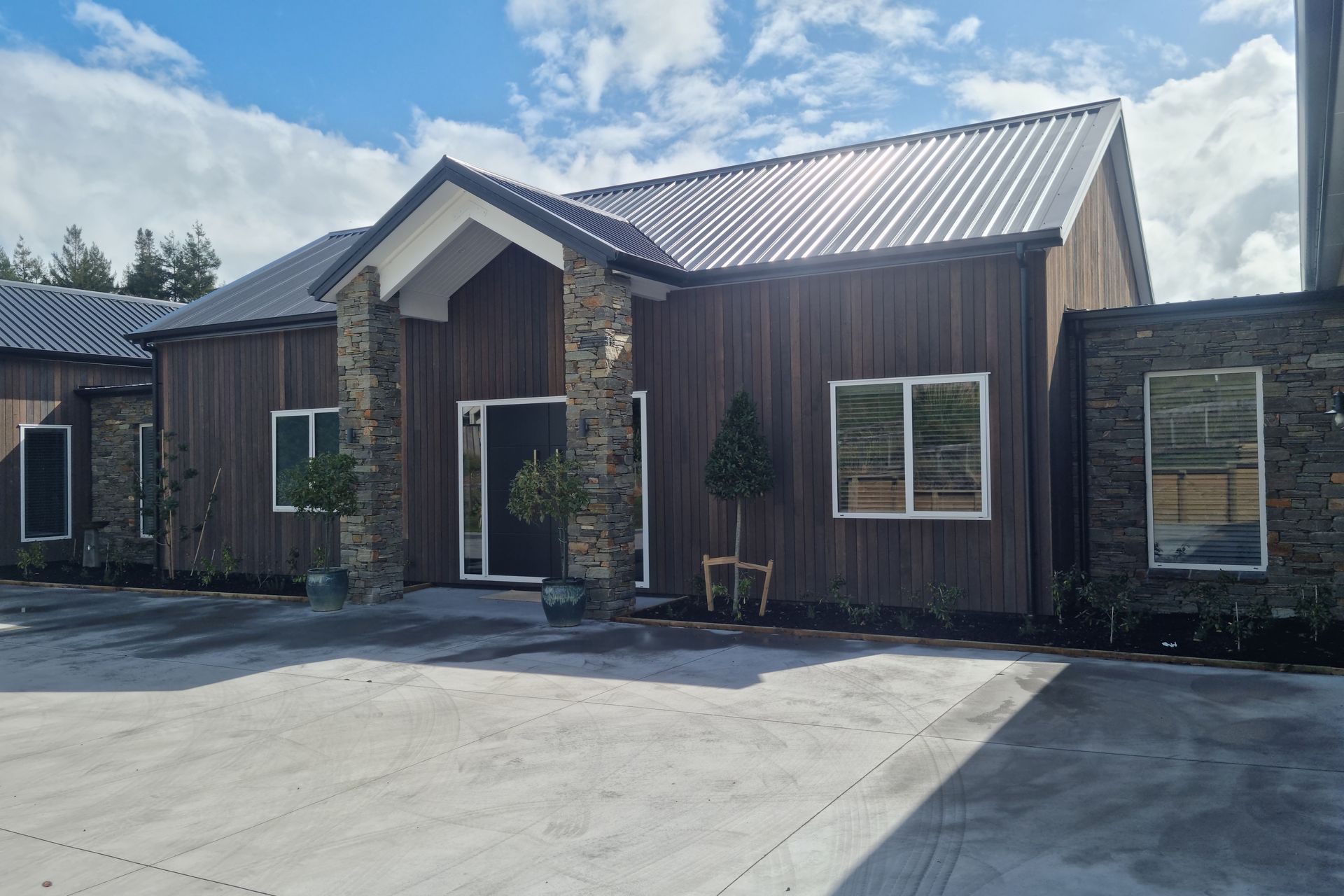Local stonemason uses ancient techniques to add a touch of rustic charm to this rural property
Written by
24 September 2024
•
4 min read

Surrounded by lush green farmland on the rural outskirts of an idyllic Waikato town, this Cambridge home effortlessly balances modern design with a classic farmhouse aesthetic. Key to the home’s timeless appeal is its gorgeous natural schist cladding, pillars, and gables crafted by Stewart Anderson of Highland Stone.
Alternating with dark-stained timber cladding, the stone walls add charm and personality to the sprawling single-story home. ArchiPro caught up with Stewart Anderson to learn more about the project.

Building with stone
Hailing from a small town in the highlands of Scotland called Lossiemouth, Stewart has always been fascinated by historic stone architecture, completing a masonry apprenticeship once he left school. In 2006, Stewart moved to New Zealand and settled in the Waikato, working out of Cambridge on a variety of stonework projects.
When building external stone walls, pillars, and gables like those at Aspin Road, Stewart arrives on site once the roof and any other adjoining cladding walls are complete.
“The first thing I do is clean the foundations by blowing and brushing any dirt or dust off. Then I set up profiles so I can get my corners plumb, and set my string lines off the profile to make sure I get a flat face,” Stewart explains.
Once those steps are complete, he’s ready to lay the schist — in this case, Cluden schist sourced from Wanaka.
“I work on setting a good bonding so I don't get any running joints vertically and horizontally. I also make corners as I go, so I get two good faces at 90 degrees — this is what makes a great pillar. As I reach the soffits on the gable I work out the angle so I can cut the schist with my saws, and I make the schist sills that go under the windows by splitting them with a hammer and chisel to get them to the same thickness.”
The most challenging part of this process is making sure all the stonework is lined up and square with the cladding, decks, and soffits, Stewart says.
“By reading plans and setting up my profiles in the correct place with measurements and squares I can ensure the stonework is aligned properly.”


Practising a centuries-old craft
Stonemasonry is one of the earliest known trades, with many of the world’s oldest temples, monuments, roads, bridges, and even entire cities built from stone. Nowadays we rely more on brick, steel-reinforced concrete, and timber as our core building materials, but the beauty of handcrafted stone architecture is still celebrated. Surprisingly, though technology has evolved dramatically since early stonemasons developed the craft, tradespeople like Stewart are still practising those ancient methods.
“The techniques haven't changed much over time,” Stewart says. “The majority of my work is still completed using hammers and chisels. The only modern equipment I use is a wet saw for cutting the back off stones if they are too wide, or if I need to cut angles.”
Categorised by their origins, the three kinds of stone used in the New Zealand construction industry are igneous, metamorphic, and sedimentary. Igneous stones, like granite, basalt and quartz, are often found indoors, while metamorphic and sedimentary rock tend to be specified for outdoor applications.
Cluden schist, the stone used at Aspin Road, is a metamorphic rock found in the Southern Alps of New Zealand. Favoured for its striking dark green colour and gorgeous natural orange and yellow flecks, the stone captures that rustic farmhouse feel popular with rural homeowners and architects alike. It’s an extremely durable stone, ideal for construction in areas with extreme weather conditions. Plus, its unique mineral composition makes it a great insulator, contributing to healthy indoor temperatures year-round.

A striking, stately home
Completed, the Aspin Road home is truly a sight to behold. With its barn-like gables, impressive stone pillars, and generous floor plan, the house is a picture of rural New Zealand bliss. And, thanks to the benefits of natural schist, the owners won’t need to do much to keep the stone walls looking as beautiful as the day they were built.
“A great reason to use natural schist is that it needs very little maintenance. Every few years you can wash the stone with a moss and mould remover, depending on where it is situated on your property, making sure to focus on the sides of the house that don’t get as much sunlight,” Stewart advises.
Learn more about Highland Stone.